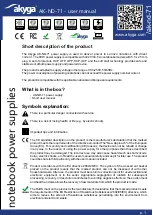
SECTION 1: SAFETY
AIR N ARC
®
300 SERIES ALL-IN-ONE POWER SYSTEM
®
PAGE - 8
090010-OP_r0
Do not weld where flying sparks can strike flammable
material.
Protect yourself and others from flying sparks and hot
metal.
Be alert that welding sparks and hot materials from
welding can easily go through small cracks and openings
to adjacent areas.
Watch for fire, and keep a fire extinguisher nearby.
Be aware that welding on a ceiling, floor, bulkhead, or
partition can cause fire on the hidden side.
Do not weld on closed containers such as tanks, drums,
or pipes, unless they are properly prepared according to
AWSF4.1 (See
Section 1.9, Principal Safety
Standards
).
Connect ground cable as close to the welding area as
practical to prevent welding current from traveling long,
possibly unknown paths and causing electric shock,
sparks, and fire hazards.
Do not use welder to thaw frozen pipes.
Remove stick electrode from holder or cut off welding
wire at contact tip when not in use.
Wear oil-free protective garments such as leather gloves,
heavy shirt, cuffless trousers, boots, and a cap.
Remove any combustibles, such as a butane lighter or
matches, from your person before doing any welding.
Follow requirements in OSHA1910.252 (a) (2) (iv) and
NFPA 51B for hot work and have a fire watcher and
extinguisher nearby.
1.4.7
FLYING METAL CAN INJURE EYES
Sparks and flying metal can be caused
by welding, chipping, wire brushing, and
grinding. As welds cool, they can throw
off slag.
Wear approved safety glasses with side
shields even under your welding helmet.
















































